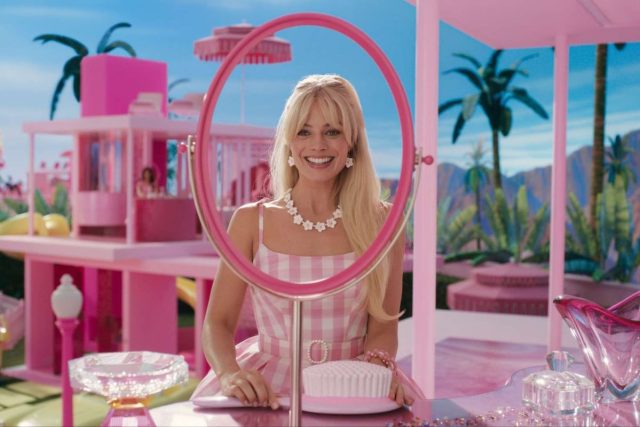Barbie — out Friday in theatres — marks the first live-action adaptation of the beloved doll collection from Mattel, following a slew of animated ones that were distributed on VOD. While the main demographic for the titular dolls is girls between the ages of 3 and 12, Greta Gerwig’s imagining is poised to contain some ‘suggesting references and brief language,’ upping the age rating to a U/A in India. Don’t be alarmed, as this wouldn’t prevent kids from watching the movie, but rather suggests that the movie appeals to a wide range of audiences. The UK follows the same ruleset as India, where kids under the age of 12 must be accompanied by a parent, whereas in the US, the film’s rating is set to PG-13 — a tad higher.
Given the trailers we’ve seen leading up to Barbie’s release, this shouldn’t entirely come as a surprise, with the titular character getting sexually harassed at one point. With the age rating as a guide, it is up to the parents/ guardians to decide whether they believe the film is suitable for their children. Back in April, Warner Bros. released a ‘beach off’ scene between two Kens — Ryan Gosling and Simu Liu — where the former repeatedly says variations of “I would beach you off,” even commenting on Liu not being able to beach himself off. It’s ironic coming from either of them since Barbie dolls don’t have genitalia. This is supported by another scene where Kate McKinnon’s Weird Barbie does the splits, seemingly trying to look under Margot Robbie’s Barbie’s dress. McKinnon plays the test subject version of Barbie that is usually discarded — in a sense — where girls would cut their hair in punkish fashion, burn their toes, and put on weird crayon makeup.
Maybe that’s why she’s aware of the harshness of the real world, which goes inline with the film’s premise where she sends Robbie’s Barbie out of Barbie Land. Upon reaching the real world with Ken, they’re ridiculed for their outrageous outfits, are treated badly, and even end up getting arrested — all of which Barbie hates, but Ken loves. Adding fuel to it is Will Ferrell as the fictional CEO of Mattel, wanting to lock the pair back inside their cardboard boxes. Speaking to The Wall Street Journal, Ferrell called the film a great satire and that it was a comment on the male patriarchy. In summary, in all three countries, the Barbie movie is targeted at audience members that are outside the core age range.
The marketing, however, has been covering the entire Barbie brand, be it Robbie showing up to premieres in iconic outfits worn by the doll herself, poster filters for fans to edit themselves into, and the toys themselves. In contrast, Christopher Nolan’s Oppenheimer is rightfully lacking in that level of promotion, despite releasing on the same day. Analysts predict that Barbie is projected to perform better than Oppenheimer at the box office, thanks in part to the memes surrounding their contrasting themes.
Then, of course, there’s the floating theory that Warner Bros. is deliberately trying to sabotage Nolan’s film out of spite for him severing his ties with the studio. Recent reports, however, dispute this rumour with WB confirming that they’ve been trying to mend their broken relationship with Nolan, so he can resume making movies with the studio.
Barbie releases July 21 in theatres worldwide, alongside Oppenheimer. Tickets for both movies are now live on BookMyShow and PayTM.


















